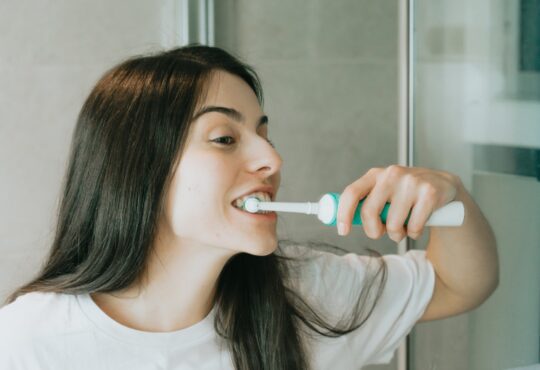
How to Choose Between Braces and Invisalign
Before you start researching and exploring your orthodontic options, it’s essential to consider whether braces or Invisalign might be better for you. Both are fantastic methods of correcting your smile, but they have different advantages and disadvantages.
If you know people who have worn braces or researched the two options, you may already have a good idea which one will be better for you. After all, everyone is unique and has different considerations when making such an important decision.
We’ve outlined everything you need to know about choosing between Braces vs. Invisalign to make the right choice for your circumstances.
What Is Invisalign?
Invisalign is a type of orthodontic treatment. The name is a brand name, but it has become commonly used to describe this type of treatment. As a general practice, “orthodontics” refers to any procedure for correcting misalignment of teeth or problems with a patient’s bite, and “orthopedic” dental treatment involves using the teeth as anchors for other dental appliances (for example, retainers or dentures).
Although Invisalign can correct some of the same issues that braces can, there are also differences. While Invisalign and braces both reposition teeth, Invisalign produces virtually invisible results. The Invisalign system uses a series of clear, custom-fitting “aligners” to realign teeth over time gradually. Because Invisalign aligners are removable (for eating and cleaning), they don’t have to be removed like metal brackets or wires attached to teeth.
People wearing Invisalign have the advantage of being able to eat and drink almost anything they want while they’re in treatment. Because Invisalign is a “no-wire” treatment, it doesn’t have the same restrictions as braces, making it an excellent option for people with special dietary or hygiene needs.
What Are Braces?
Braces are an orthodontic treatment that uses metal and/or elastomeric (rubber-like) brackets attached to teeth to reposition them. The brackets may be connected by a wire running around the teeth’ back.
Braces are typically used to treat a condition called “malocclusion,” a misalignment of teeth that can affect a person’s appearance, self-esteem, and ability to use teeth correctly. Braces are the most common treatment for a malocclusion. They have been used to treat dental irregularities since the 19th century.
Braces are usually attached to the teeth during childhood and adolescence. In some cases, adults may also wear braces to correct dental irregularities, but this is much less common. Braces are one of the most common orthodontic treatments, and they can be used to correct almost any dental issue, from crowding and spacing issues to problems with the bite. Braces are typically used for patients whose teeth who are done growing.
Things to Consider When Choosing Between Braces and Invisalign
One of the first considerations when choosing between braces and Invisalign is your age. While many of these treatments can be done on children, Invisalign is typically prescribed to adults. Braces are almost always done on children aged ten and under. At this age, the teeth are still changing, so the braces provide a way to keep teeth in place while they move. This can allow the teeth to finish growing in the correct position.
Braces are not recommended for those over 16 years old because the teeth are fully grown, and the braces will only slow the process of the teeth shifting back to their natural position. Invisalign is typically used on people between the ages of 12 and 35. Another essential factor to consider is your lifestyle.
People with active lifestyles may prefer Invisalign because there are no signs of treatment. People who participate in sports requiring braces’ removal may choose Invisalign because it can be removed for a day of competition without leaving behind a telltale sign that braces were once there.
Which Option Is Right for You?
As you can see, there are many factors to consider when deciding between Invisalign and braces. Depending on your situation, you may choose one type of treatment over the other. However, even if you decide that Invisalign is preferable, you’ll still have to decide which provider you’ll trust with your smile.
Conclusion
With all the information in this article, you should be able to choose between braces and Invisalign confidently. It’s essential to bear in mind that no treatment is one-size-fits-all. You may want to opt for one treatment over another based on your specific needs.
It’s also important to remember that dental treatment is a long-term investment. Choosing a treatment and a provider you can trust with your smile for the long haul is an integral part of ensuring that your smile is healthy, attractive, and functional for the rest of your life.




